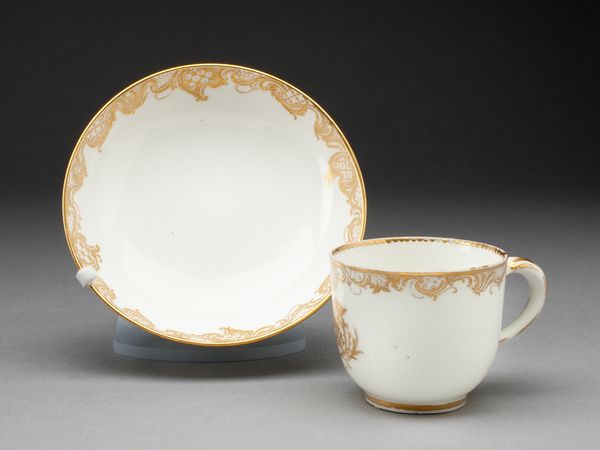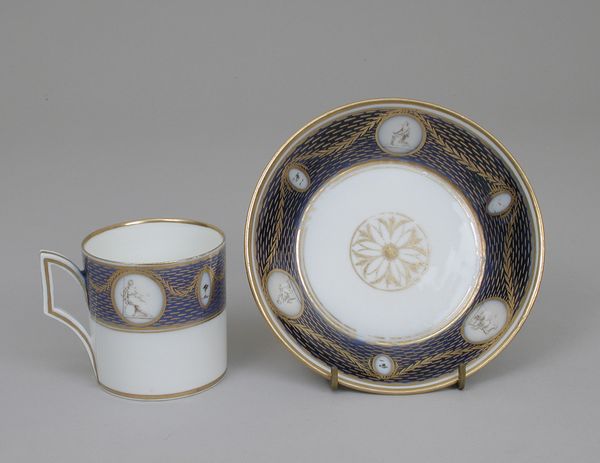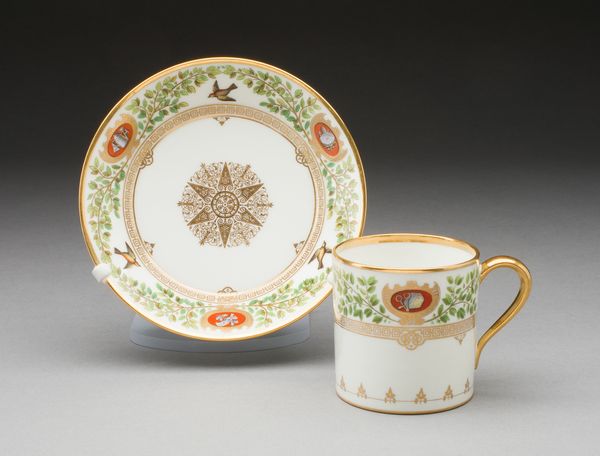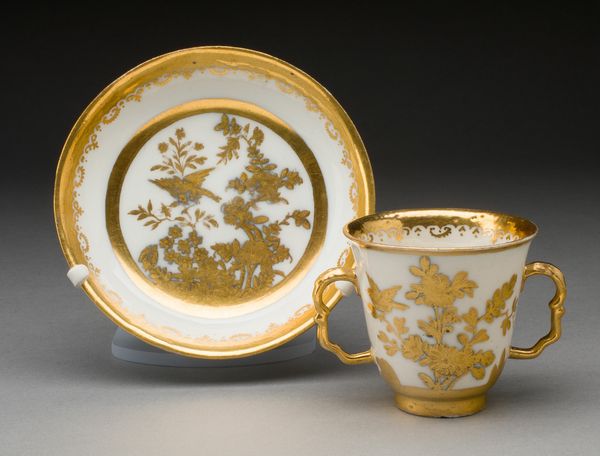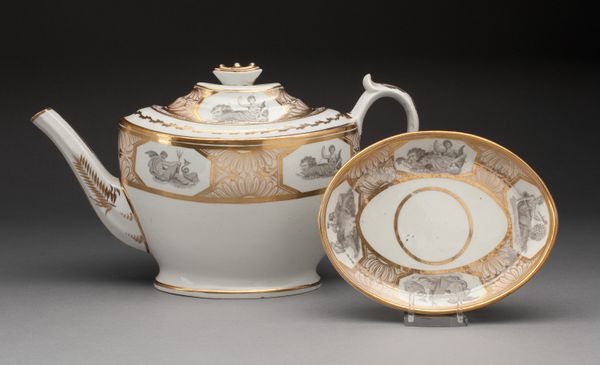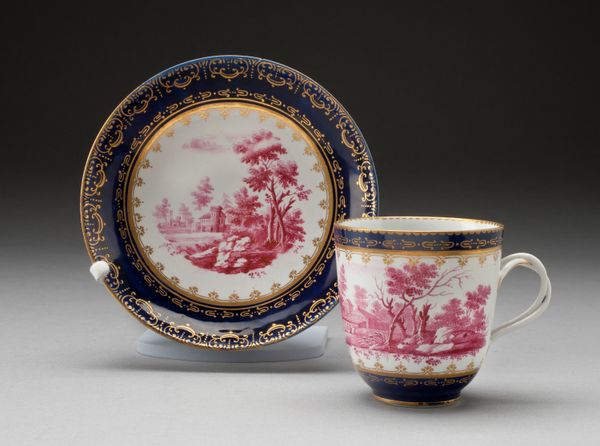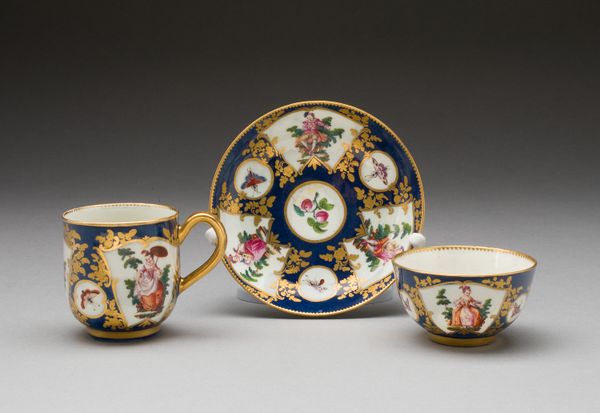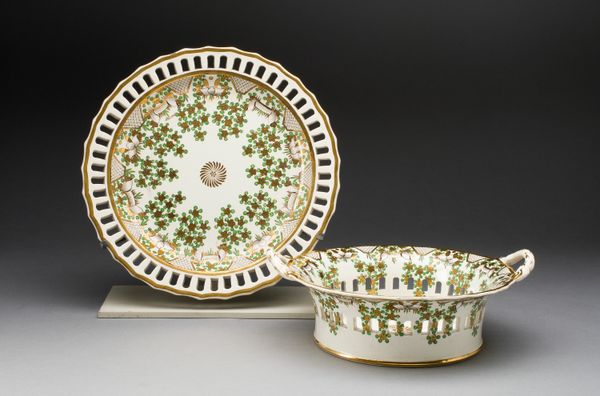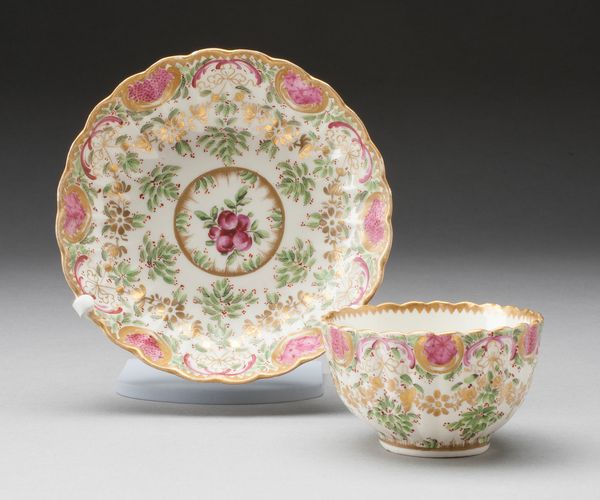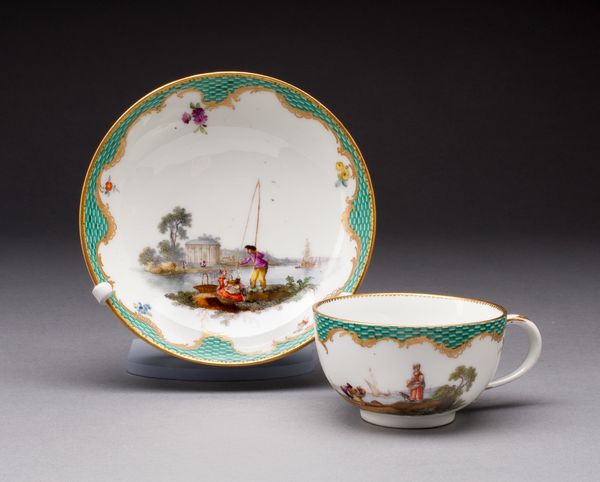
Teacup, Coffee Cup, and Saucer c. 1800
0:00
0:00
Dimensions: Tea cup: 6 × 10.2 cm (2 3/8 × 4 in.); Coffee can: 6.2 × 8.9 cm (2 7/16 × 3 1/2 in.); Saucer: D. 3.2 cm (1 1/4 in.); diam. 14 cm (5 1/2 in.)
Copyright: Public Domain
Curator: Welcome! Before us we have a delightful porcelain teacup, coffee cup, and saucer crafted by the Worcester Royal Porcelain Company around 1800. Notice the refined Rococo details and delicate Neoclassical motifs. Editor: I am immediately drawn to the visual narrative that this set conveys. The combination of ceramic, gold, and muted scenes evoke a sense of historical opulence and invite questions about the social practices of that time. Curator: Absolutely. Tea and coffee consumption were laden with social and political significance in the 18th and 19th centuries, tied to colonial trade, global economics, and domestic life. Porcelain became an essential element for elites, signifying taste and refinement. Editor: And this set visually connects those concepts! Each vessel presents distinct Greco-Roman figures in a soft gray transferware, bordered with golden embellishments, reflecting perhaps, the influence of Enlightenment ideals and the Grand Tour aesthetic popular at the time. But one also must acknowledge it simultaneously represents colonial exploitations needed to acquire commodities to fill these cups. Curator: Precisely! The iconography drawn from antiquity speaks to this era's cultural aspirations and its elite education system. Sets like these became conversation pieces within the drawing room, as emblems of cultivated tastes. It reveals an intriguing dialogue of aesthetic values, elite display and a burgeoning global network, albeit exploitative at the time. Editor: Yes. When looking at these types of refined pieces we must remember the complex layers that connect European history to global power structures. Objects like this cup remind us that domestic comfort often obscures uncomfortable truths. The images present ideals from an unequal foundation, and the beauty of Rococo design became an intricate tool for negotiating identity. Curator: I completely concur. Appreciating historical craftsmanship needs nuanced awareness. "Teacup, Coffee Cup, and Saucer," provides us that opportunity. Editor: Definitely! This artwork invites us to meditate about material culture, taste, class, and hidden histories that enrich—and trouble—our relationship with the past.
Comments
No comments
Be the first to comment and join the conversation on the ultimate creative platform.

